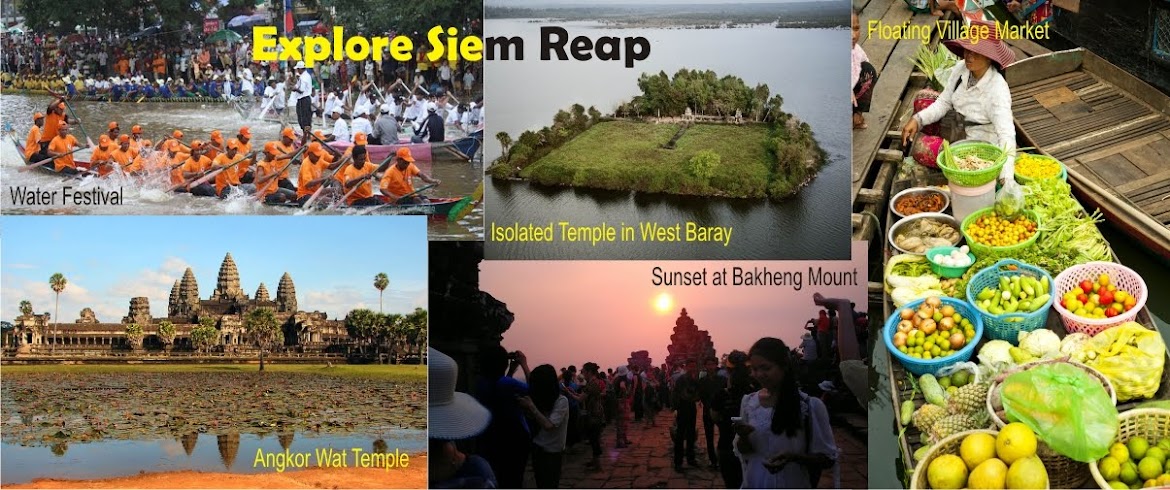These two buildings were constructed towards the end of the 12th century, during the reign of Jayavarman VII, on the eastern side of the Royal Palace, facing the so-called Royal square, from which the reliefs are clearly visible.
THE TERRACE OF THE ELEPHANTS
This wall, more then 300 m long, is carved in high relief with elephants in hunting scenes, Two elephants have seized a tiger, one holding its body and the other its thigh, one hunters hurl spears at a boar. A mahout drinks from his flask, oblivious of his master, touching his shoulder to remind him that his ought to leave some drink for the others. At the northern extremity of the terrace are located the most interesting reliefs depicting scenes of athletic games horse riders fighting with spears, wrestlers, galloping chariots, gladiators, even polo players can be recognized (100 and 101, page 74). These could will be the entertainment that the king bestowed on his people in the square. A sort of forum, in front of the royal palace.
The interpretation of the reliefs at one extremity, modelled in a dynamic and powerful way, in higher relics, is problematic. There is a five-headed horse, shown frontally, surrounded by warriors with unusual hairstyles, and brandishing clubs. It is assumed that the scene takes place in a swamp, because the personages have their feet on lotus calyxes. Small shaven-headed dwarves, looking frightened, cower between the legs of the horse, one of them holds a stick terminating in a cross. There is no definite reference for this story, although it has been suggested that the horse may represent surya the sun. or the Bodhisattva Avalokiteshvara in the form of Balaha.
Behind the Terrace of the Elephants are the elegant ponds of the Royal Palace, with walls carved with friezes of decorative reliefs (239).
On top of this terrace, located immediately to the north of the Elephant Terrace, stood the statue of the so-called Leper king. However it represents neither a king nor a leper. Its mouth has fangs, and it therefore may represent a creature from hell.
Excavations gibe revealed that, behind the exterior wall, there is another, also entirely decorated (238). The reliefs, both of the exterior and interior walls, consist of superimposed registers. they illustrate rows of various mythological beings - naga, Garuda, Kumbhanda, etc, who inhabit Mount Meru, as will as a considerable number of demons, recognisable by their thick eyebrows and fangs, and perhaps representing personages from hell living below the sacred mountain.

No comments:
Post a Comment